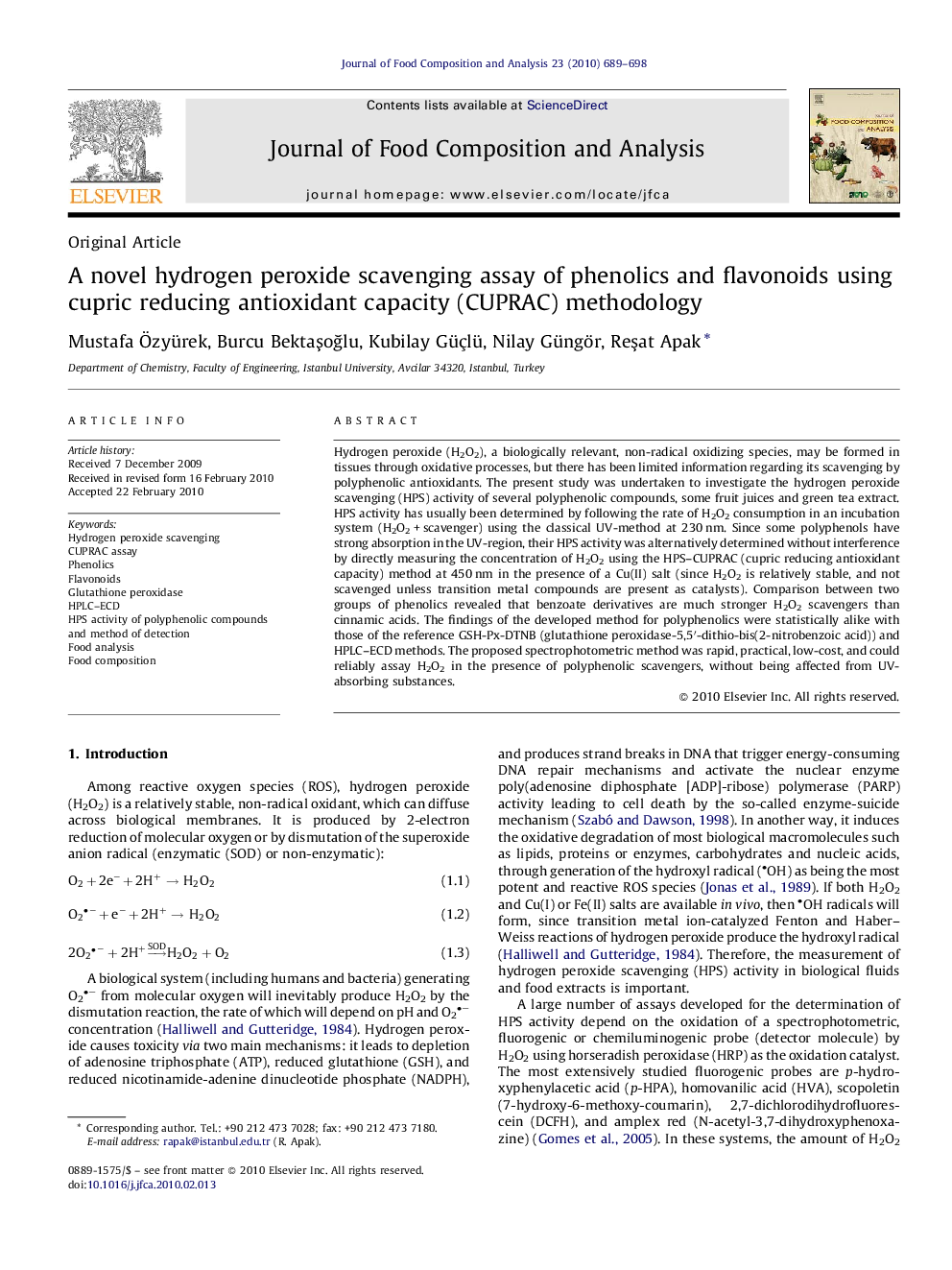| کد مقاله | کد نشریه | سال انتشار | مقاله انگلیسی | نسخه تمام متن |
|---|---|---|---|---|
| 1218971 | 967634 | 2010 | 10 صفحه PDF | دانلود رایگان |

Hydrogen peroxide (H2O2), a biologically relevant, non-radical oxidizing species, may be formed in tissues through oxidative processes, but there has been limited information regarding its scavenging by polyphenolic antioxidants. The present study was undertaken to investigate the hydrogen peroxide scavenging (HPS) activity of several polyphenolic compounds, some fruit juices and green tea extract. HPS activity has usually been determined by following the rate of H2O2 consumption in an incubation system (H2O2 + scavenger) using the classical UV-method at 230 nm. Since some polyphenols have strong absorption in the UV-region, their HPS activity was alternatively determined without interference by directly measuring the concentration of H2O2 using the HPS–CUPRAC (cupric reducing antioxidant capacity) method at 450 nm in the presence of a Cu(II) salt (since H2O2 is relatively stable, and not scavenged unless transition metal compounds are present as catalysts). Comparison between two groups of phenolics revealed that benzoate derivatives are much stronger H2O2 scavengers than cinnamic acids. The findings of the developed method for polyphenolics were statistically alike with those of the reference GSH-Px-DTNB (glutathione peroxidase-5,5′-dithio-bis(2-nitrobenzoic acid)) and HPLC–ECD methods. The proposed spectrophotometric method was rapid, practical, low-cost, and could reliably assay H2O2 in the presence of polyphenolic scavengers, without being affected from UV-absorbing substances.
Journal: Journal of Food Composition and Analysis - Volume 23, Issue 7, November 2010, Pages 689–698